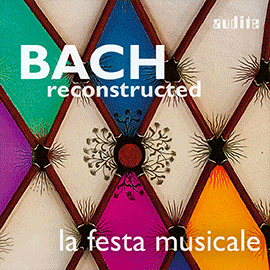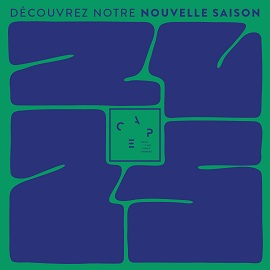Während chinesische oder japanische traditionelle Musik öfter Eingang in die westliche klassische Musik fand, ist die indische Musik weniger oft als Inspirationsquelle zu finden. Umso interessanter ist also dieses Album des kanadischen Komponisten Gabriel Dharmoo.
Sur les rives de (2011) ist inspiriert von seiner Beobachtung des markanten Kontrasts zwischen den beiden Ufern des Ganges in Varanasi.
Auf dem linken Ufer befindet sich die von Menschen wimmelnde Stadt, die andere Seite ist menschenleer. Der Komponist sagt: « Bei einer Bootsfahrt auf dem heiligen Fluss wird der Kontrast zwischen dem historischen, zivilisierten und komplexen Ufer und dem natürlichen, spärlichen und rohen Ufer deutlich. Inspiriert von diesem Bild reist das Stück von einem Ufer zum anderen, von einem ‘kulturellen’ melodischen Material zu einem rein ‘organischen’ Material, das durch das Spiel der Kieselsteine repräsentiert wird. » Das klanglich interessante Stück ist hier in einer spannungsvollen Interpretation zu hören.
Sur Bà Nôi für Klarinette, Fagott und Klavier entstammt Dharmoos Filmmusik Bà nội für einen Film von Khoa Lê (2013). Es ist ein melancholisches Stück, in dem die klagenden Klänge des Fagottes und der Klarinette durch die quirligeren klänge des Klaviers kontrastiert werden. Dass thematisch abwechslungsreiche Moondraal Moondru (2010) erforscht Rhythmen und Melodien der südindischen karnatischen Musik
Doch es nicht allein die indische Musik, die Dharmoo inspiriert. Das zeigt sich in ‘the fog in our poise’, das äußerst einfallsreich die zeremonielle Musik einer imaginären Kultur evoziert oder auch in Vestiges d’une fable (2014), in dem der Komponist eine Bevölkerung erfindet und ihr eine von ihm erdachte Folklore zuordnet. Das ergibt ein etwas skurril anmutendes parodistisches musikalisches Theater, in dem Dharmoo sein eigenes Arrangement der Original-Sopranstimme singt.
While traditional Chinese or Japanese music has often found its way into Western classical music, Indian music is less often found as a source of inspiration. This makes this album by Canadian composer Gabriel Dharmoo all the more interesting.
Sur les rives de (2011) was inspired by his observation of the striking contrast between the two banks of the Ganges in Varanasi.
On the left bank, the city is teeming with people; the other side is deserted. The composer says: « A boat ride on the holy river reveals the contrast between the historical, civilized and complex bank and the natural, barren and raw bank. Inspired by this image, the piece moves from one bank to the other, from a ‘cultural’ melodic material to a purely ‘organic’ material represented by the play of pebbles ». The tonally interesting piece can be heard here in an exciting interpretation.
Sur Bà Nôi for clarinet, bassoon and piano is taken from Dharmoo’s film score Bà nội for a film by Khoa Lê (2013). It is a melancholy piece in which the plaintive sounds of the bassoon and clarinet are contrasted with the more lively sounds of the piano. The thematically varied Moondraal Moondru (2010) explores the rhythms and melodies of South Indian Carnatic music.
But it is not only Indian music that inspires Dharmoo. This can be seen in « the fog in our poise », which evokes the ceremonial music of an imaginary culture in a highly imaginative way, or in Vestiges d’une fable (2014), in which the composer invents a population and assigns it a folklore of his own making. The result is a somewhat bizarre parodistic musical theater in which Dharmoo sings his own arrangement of the original soprano voice.























